Avoid knockoffs

To begin with, if you're in search of authentic store-bought maple syrup that doesn't compromise on quality, you'll need to channel your inner detective. "Don't be misled by bottles labeled 'pancake syrup' or anything that includes the term 'flavored,'" advises Dennis Littley, a seasoned chef and author of the blog Ask Chef Dennis. "Genuine maple syrup is 100% pure maple syrup, and it will clearly state that on the label. If the price appears too good to be true, it’s likely just corn syrup masquerading as the real thing." Even if it has a maple-like taste, that’s probably due to artificial flavors or coloring, according to Jennifer Pallian, a recipe tester at Foodess.
Next, take a look at the ingredients list. Authentic maple syrup will contain only one ingredient, usually labeled as maple syrup or sap, explains Ken Tobby, a food scientist at Organic Solace. Any additional ingredients are fillers or additives. He points out that this authenticity comes at a cost: "True maple syrup is generally pricier due to its labor-intensive and meticulous production process." If the price is suspiciously low, it likely indicates some form of deception in either the ingredients or the manufacturing process, or possibly both.
If you're ever in doubt about a product, don’t hesitate to pull out your phone and do a quick search. The manufacturer should ideally have a website or at least a social media presence if they’re a small, family-run business, along with a contact number for inquiries. If you can’t find any information, it might be wise to pass on that "brand."
Look for Grade A only
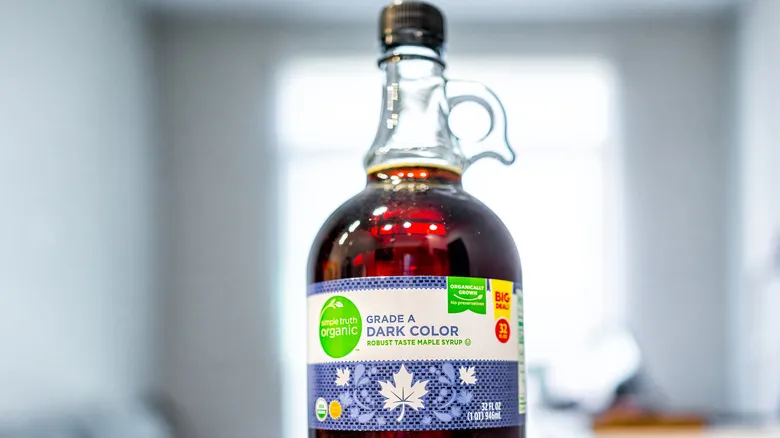
Once upon a time, Grade B maple syrup existed. In 2012, to create a more uniform approach to maple syrup production and sales, the International Maple Syrup Institute proposed eliminating the Grade B label in favor of exclusively using Grade A. This official change was implemented in 2015 and is still in effect today.
"The Grade A label signifies that the syrup meets the USDA's standards for color, clarity, flavor, and density," explains Jennifer Pallian. "There might still be some confusion because previously, maple syrup was categorized as Grade A if it was light in color and flavor, and Grade B if it was darker and more robust in taste. Under the current system, Grade A maple syrup encompasses all pure maple syrups that fulfill the quality requirements." Jessica Randhawa from The Forked Spoon adds that Grade A syrup is free from defects, of high quality, and suitable for general consumption. If the syrup meets these criteria, it is then classified into various categories based on flavor and color.
This is where a little detective work can come in handy—if by "detective work" we mean "reading the label." Grade A maple syrup is not trying to conceal itself; it will clearly state its designation on the front of the bottle. For now, disregard terms like "golden" or "dark," as they do not affect the quality (guaranteed by the Grade A standard) or nutritional value. The vitamins and minerals found in maple syrup are influenced by terroir—the climate, soil, and microbial makeup of the growing region—and sometimes the season, but not the syrup's color.
Choose according to designation
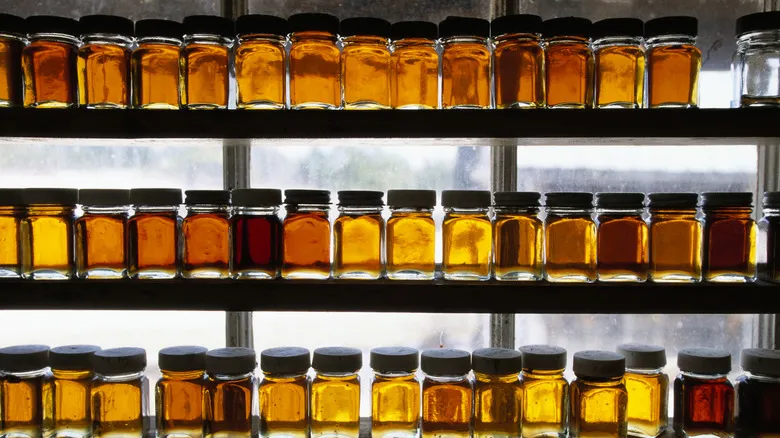
Now we arrive at the exciting part... indeed, all those colors and flavors carry significance. As a consumer, you can leverage this information when selecting store-bought syrup. According to the new guidelines, there are four Grade A classifications: golden delicate, amber rich, dark robust, and very strong dark. Each classification features both a color descriptor (golden, amber, dark, and very dark) and a flavor profile (delicate, rich, robust, and strong).
"Golden delicate is the mildest maple syrup and the lightest in hue," explains Trista Best from The Candida Diet. "On the opposite end, very strong dark is the most intense in both flavor and color, with caramelized undertones. Amber and dark robust sit in the middle, offering a harmonious blend of sweetness."
"This variation is influenced by the progression of the sap season," notes Jennifer Pallian, which generally spans from late February to early April. "As the maple tapping season advances through spring, the sap naturally evolves due to factors like weather, tree metabolism, and microbial activity." These shifts result in increasingly darker syrup with more complex flavors. Earlier in the season, the sap tends to have fewer minerals and a sweetness that is almost floral, according to Dennis Littley. By the season's end, he adds, the syrup takes on a richness reminiscent of molasses.
Check the label for other information

The label provides important details for maple syrup enthusiasts. Start by checking the expiration date; opt for fresher bottles since syrup doesn't improve with age like wine does. While maple syrup can last indefinitely if stored properly, there's no guarantee, and even well-sealed containers can allow some oxygen to seep in, potentially altering the syrup's quality.
Additionally, consider geographical indicators, as Ken Tobby points out: "Reputable companies typically source their products from well-known regions like Quebec or Vermont." Although Vermont is the leading producer of maple syrup in the U.S., there are many other credible areas that produce excellent syrup. You don't have to limit your purchases to Quebec or Vermont, but aim for syrup from colder regions recognized for their maple syrup production. In Canada, notable sources include Ontario, New Brunswick, Prince Edward Island, and Nova Scotia. In the U.S., New York, Maine, and Wisconsin are reliable options. As a consumer, your goal is to ensure you're getting authentic maple syrup, regardless of whether it comes from the most famous syrup-producing areas. All genuine maple syrup will indicate the producer, Tobby notes.
Finally, if this matters to you, look for an organic certification. "Organic farming and production methods avoid synthetic chemicals during processes like tapping and bottling," Tobby explains, "so organic maple syrup follows strict production standards." It's a healthier and more environmentally friendly choice if you can find it.
Select middle grades for pancakes and waffles

So, the burning question is: Which store-bought maple syrup should you pick for your pancakes, waffles, and French toast? Or, if you're a true maple syrup enthusiast, for your bacon, ham, and scrambled eggs? The good news is that, unlike many things in life, there’s a straightforward answer to this dilemma.
"Amber rich, without a doubt," says Dennis Littley. "It strikes the perfect balance between sweetness and maple flavor without overwhelming your stack." Additionally, Ken Tobby notes, "It's versatile; its richness pairs well with various toppings like nuts or fruits." However, if you lean towards bolder flavors, you don’t have to limit yourself to this option. "As a devoted maple lover," Jennifer Pallian shares, "I always opt for the darkest variety available (and I’ll even lick the plate)!"
Regardless of your preference, the golden delicate and very strong dark syrups may not be the best picks for those who aren’t maple aficionados when the syrup takes center stage. The lighter syrup is too mild, risking being overshadowed by the buttery, cooked flavor of the pancakes, while the darkest can be overly intense. To truly know what you like, you’ve got to sample the options.
Taste the grades to know what you're getting
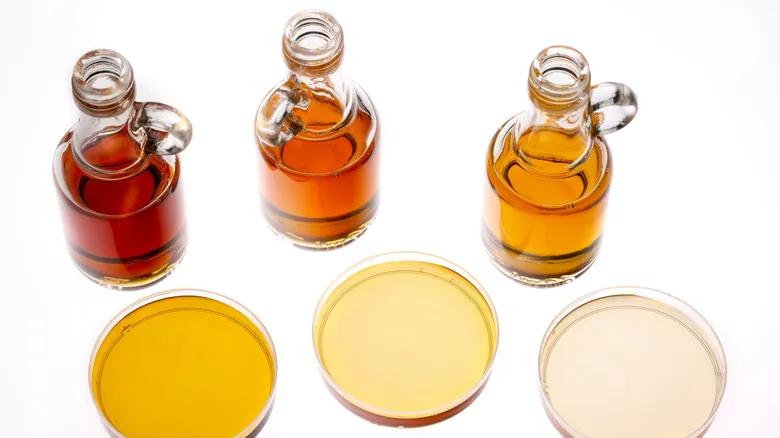
Oh, a tasting session? Absolutely, yes please ... bring on all the syrups! "Sampling various grades can be a delightful and enlightening experience," says Jessica Randhawa. "It allows you to appreciate the range of flavors and determine which ones you prefer for different applications—whether it's drizzling over desserts or pancakes, or incorporating into your baking." You can think of it like wine tasting, according to Dennis Littley: "Each syrup has its own character, and once you've tried them all, you'll never go back to the lower-quality options." Additionally, he notes, "local and small-batch syrups often boast distinctive flavors." Life is too short to miss out on such an experience.
Tasting also helps you avoid unexpected surprises, Ken Tobby explains. Once you're familiar with what you're getting, you can confidently use that knowledge in your recipes. This makes purchasing store-bought maple syrup, which can be quite pricey, a lot less daunting. Speaking of budget, if you're looking for a more economical way to sample a variety of syrups (and if it doesn't already exist, it definitely should), consider buying an online sampler. This way, you won't have to commit to four different bottles.
Let your recipe guide you
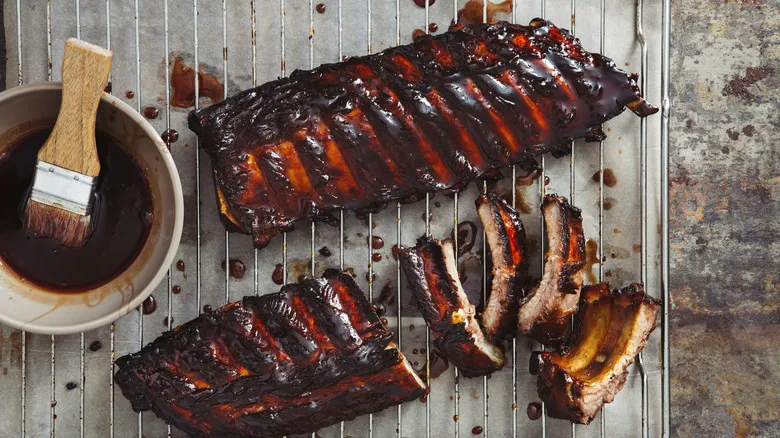
Certain ingredients perform their roles consistently: whole milk, all-purpose flour, medium cheddar cheese, and broccoli. However, maple syrup is not one of those ingredients. "The type of syrup you select greatly influences the flavor profile of your dish," says Ken Tobby, emphasizing the importance of pairing the right syrup with your recipe.
"Golden delicate syrup is ideal for dishes that require a subtle sweetness without overpowering other flavors, such as light dressings, custards, or airy desserts," he explains. Amber rich syrup is highly adaptable, making it suitable for a wide range of baked goods, toppings, and glazes. Dark robust syrup is best when you want a pronounced maple flavor, perfect for recipes like gingerbread or muffins. As for very strong dark syrup, reserve it for barbecue sauces, heavily spiced dishes, and confections, he advises. Jennifer Pallian concurs, suggesting that golden delicate syrup is best for light drizzles (like on yogurt or in tea), while amber rich works well with breakfast items, and dark robust is great for baking or marinating. Very strong dark syrup? "Its almost molasses-like flavor is excellent in savory dishes, hearty baked goods, or whenever you want to impart a deep, intense maple note," she adds, stating, "I always seek an intensely maple flavor."
It's also crucial to consider acidity when using store-bought maple syrup. As the season progresses, increased microbial activity and changes in natural sugars can lead to a more complex and acidic syrup, according to Pallian. "This is particularly important when using delicate dairy products that might curdle with added acids," she warns. "I've experienced dark maple syrup curdling my whipped cream!"
Don't worry about the packaging
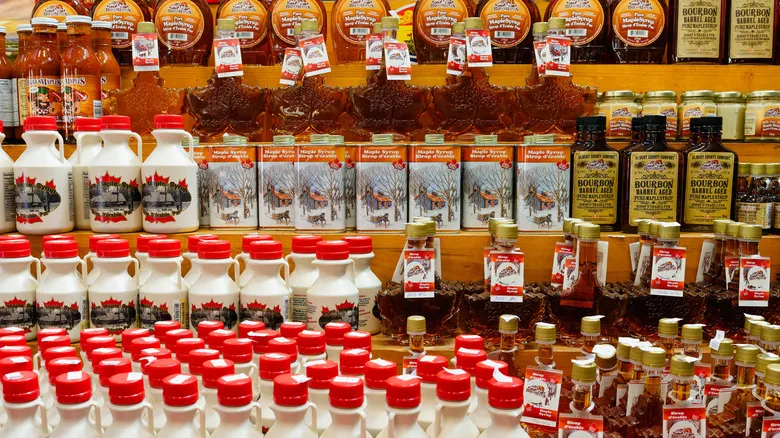
Any food-safe packaging is suitable for store-bought maple syrup, so there's no need to focus on glass bottles over less stylish plastic containers. The main consideration with packaging is the design of the cap. For example, Costco's Kirkland brand has received criticism for its poorly designed cap, which leads to the spout becoming crusty and makes it difficult to seal the lid properly. (This writer can attest to that.) If you find the pour spout of your store-bought maple syrup frustrating, you can always transfer the syrup into a clean glass bottle of your choice or a Mason jar, both of which are easier to maintain.
While it's not essential to buy maple syrup already in glass jars, be cautious about storing it in plastic containers for extended periods. Even when unopened, plastic can allow oxygen to seep in, causing the syrup to darken and altering its color from its original state. If you anticipate not using your syrup for a while, it's advisable to opt for glass bottles, which will help prevent oxygen transfer to the syrup.
Buy larger quantities for a better price
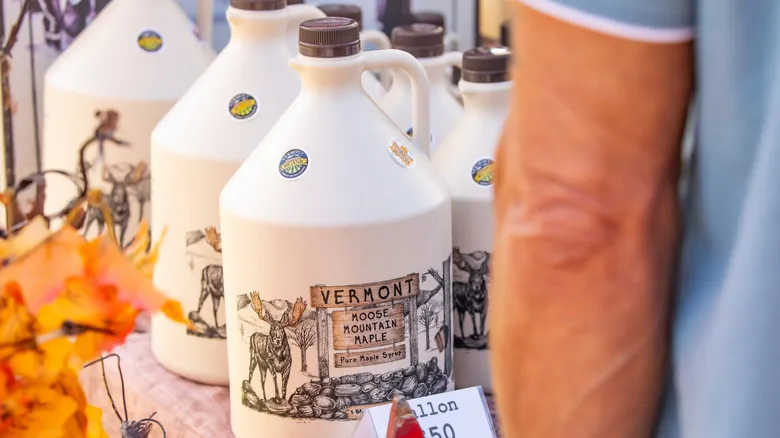
If you're a big fan of maple syrup, consider purchasing in bulk. While it may require an initial investment, it allows you to obtain high-quality syrup at a significantly lower price. Jessica Randhawa notes, "Buying larger quantities of maple syrup typically results in a better price per unit. Bulk purchases reduce packaging and shipping costs, and many suppliers provide discounts for larger orders." If you frequently use syrup, she suggests that taking advantage of economies of scale is a smart choice.
Dennis Littley concurs, stating, "A gallon might seem excessive, but it’s much cheaper per ounce compared to smaller bottles, and you can divide it into jars for sharing or storage." With various storage options available for maple syrup—ranging from cupboard to refrigerator to freezer—you can easily consume a gallon before it spoils. While most people may not require larger sizes, options are available in quantities of 2, 2 ½, 4, and 5 gallons.
Yes, you can make your own maple syrup

You read that correctly: You can create your own maple syrup! All you need is a maple tree—sugar, black, red, and silver maples produce the sweetest syrup—along with a drill, a spile, a bucket, some basic kitchen tools, and a lot of enthusiasm. Jennifer Pallian highly recommends this: "I grew up on the East Coast of Canada where we tapped our own maple trees to make syrup, and I’m absolutely passionate about it. I’m obsessed!"
For starters, it’s a lot of fun. Plus, it’s quite straightforward: drill a hole in the tree, insert the spile (a specialized sap tap), collect the maple sap in a hanging bucket, and when you have enough, boil it down. The best part is that by adjusting the boiling times, you can achieve different results. To make maple candy, Pallian explains, you boil the sap to around 235 degrees Fahrenheit, which is the softball candy stage, and then pour it over clean, packed snow. "The syrup cools instantly and thickens into a taffy-like candy," she says. "It’s chewy, sticky, and absolutely delicious."
If you prefer spreads over candy, there’s good news: "At a slightly lower temperature, you can make maple butter, which is thick and spreadable." However, if you boil it beyond the softball stage, the syrup will crystallize into maple sugar. This process can be done with any type of syrup; it all depends on your taste preferences. If you want to make candy, you’ll likely need to visit a maple-producing area earlier in the season when there’s snow on the ground, resulting in lighter-colored syrup.
Store maple syrup properly regardless of designation
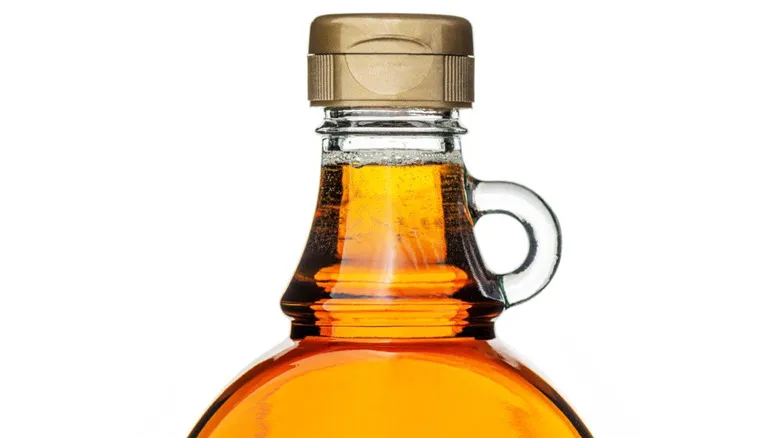
"One crucial aspect that is often neglected is how to store maple syrup," says Jessica Randhawa. If you're unfamiliar with pure maple syrup, you might think it's fine to leave it out at room temperature. While it's true that stores display it on regular shelves instead of in the refrigerated section, that's only because it hasn't been opened yet. Pure maple syrup lacks added sugars and preservatives, which means it doesn't have the same shelf life as imitation syrup, which can remain out indefinitely. Although the high sugar content makes it difficult for microbes to thrive, they can still eventually develop at room temperature, resulting in mold on the surface. It's best to use unopened bottles within two years.
"Once opened, maple syrup should be refrigerated to avoid spoilage and preserve its flavor," Randhawa advises. "You can also freeze it to further extend its shelf life, making it a smart choice to buy in bulk." Generally, you can keep syrup in the fridge for up to a year and in the freezer for several years.
Regardless of how you store it, be aware that over time, crystals may form in jars and bottles of store-bought maple syrup, including on the underside of the cap or spout, due to exposure to air. This can occur whether the syrup is in the fridge or the cupboard, so the best approach is to use the syrup within a reasonable timeframe.
Recommended

The Ingenious Rule To Remember When Planning Your Grocery List

Look Beyond Typical Grocery Store Apps To Help Cut Costs

The Origin Of Donuts And How They Got So Popular
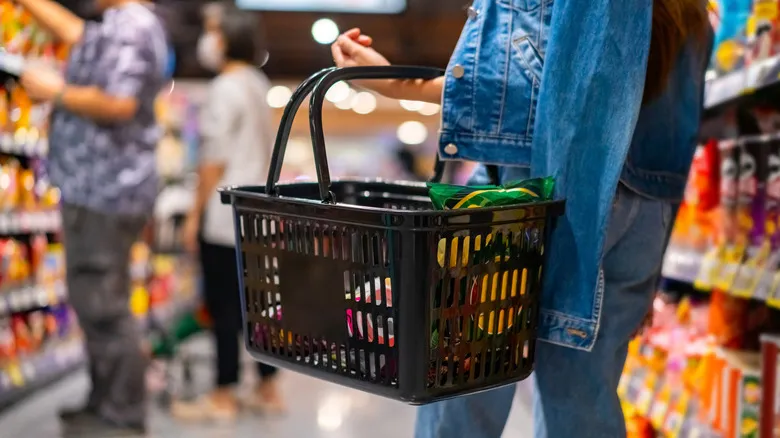
The One Payment Method That Could Actually Help Your Grocery Budget
Next up

